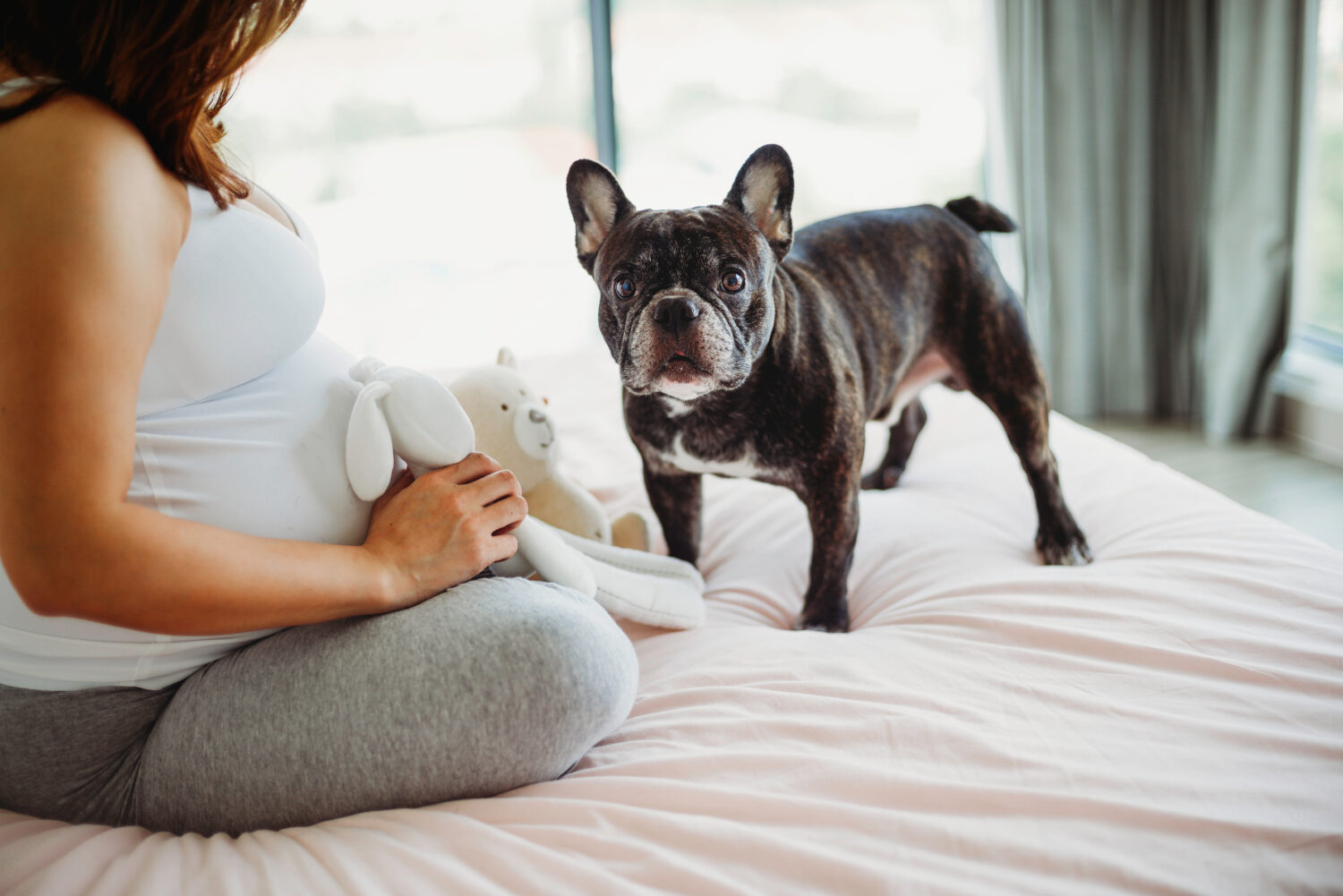
As the veterinary field grows, it is increasingly composed of women. According to the AVMA, 55% of veterinarians are female, as are 78% of veterinary students. According to NAVTA, 90% of veterinary technicians are female. With such a large portion of the field made up of women, pregnancy, and how pregnant women should adjust their work routines, are recurring topics in many veterinary practices.
So, how should you handle pregnancy? You should first speak with your obstetrician, who can help guide you, to some extent. Keep in mind that many obstetricians don’t have a thorough understanding of the veterinary field, and may not know all the risks. It is up to you to ensure your baby is fully protected throughout your pregnancy. While precautions are necessary, being pregnant should not stop you from doing your job.
One of the first decisions you’ll need to make is a difficult one: When to tell your co-workers. While many people wait until after the first trimester to share their exciting news, many aspects of veterinary practice can affect your pregnancy early, and must be considered.
Radiation exposure
A growing fetus must be protected from radiation exposure. While you can wear protective lead gear, and stand as far as possible from the X-ray unit, there is still risk to a rapidly growing fetus. Asking another team member to temporarily take your place in the radiology room is safest, but if you must continue taking X-rays, ensure you use a fetal monitor.
Anesthesia
Another challenge of your first trimester, and throughout your pregnancy, is whether you should participate in anesthesia. With a few adaptations, you can continue to safely participate in anesthetic procedures, but you must vigilantly prevent anesthetic gas exposure. Using an obstetrician-approved respirator is safest, and is the best way to keep your baby safe. Keep in mind the greatest opportunities for anesthetic exposure occur during intubation, extubation, and recovery. You can mitigate your risk during these times by:
Ensuring a good seal — Check each endotracheal tube cuff for leaks before use, and ensure the cuff creates a good seal in the trachea before turning on the anesthetic gas. You may need to use slightly more induction agent than normal as you take time to ensure a good seal.
Clearing the system — During extubation, turn the gas completely off, empty the reservoir bag, and run oxygen for at least 10 full breaths, so the patient can clear most of the gas from their lungs.
Keeping your distance —Patients continue exhaling residual anesthetic gas as they recover, so don’t stand directly in front of a patient as you disconnect them from the system, and keep your mask on.
Blocking exposure — During a dental procedure, you can pack clean gauze in a patient’s throat to help reduce gas exposure from potential leaks as you work in their mouth.
If possible, have another team member take over during periods of increased potential exposure, and work on paperwork during those times.
Laboratory procedures
When doing lab work, you should always wear gloves to prevent exposure to potentially contaminated body fluids. During pregnancy, you should also wear a mask or safety glasses. Concerning pathogens that can affect pregnancy include:
Toxoplasma gondii — Toxoplasma, which is shed in cat feces, is typically not active until one to five days after defecation. Fresh fecal samples carry a lower infection risk than samples of unknown age brought in by an owner.
Leptospira interrogans — Leptospira bacteria is primarily shed in dog urine, but cats can also be carriers. The pathogen can enter your body through mucous membranes, or small scratches on your skin, and can cause significant kidney and/or liver damage to you and your child. Avoid working with patients suspected of being infected, if possible. Placing a urinary catheter will mitigate your risk of urine exposure, so long as it doesn’t leak, but keep in mind urine can also be on a patient’s fur or paws if they walked through urine before coming to your hospital.
Per the CDC, a Toxoplasma or Leptospira infection during pregnancy may cause no signs in the mother, but can cause swollen lymph nodes and flu-like symptoms in newborn babies.. More serious issues, such as brain and eye damage, are seen in a small percentage of newborns.
Handling medications
While not many currently used veterinary drugs cause known pregnancy complications, a few, such as Misoprostol, can cause severe issues, including spontaneous miscarriage or preterm labor. Since you may not be familiar with every drug’s risk, wear two pairs of exam gloves when filling prescriptions to prevent complications. If your hospital carries chemotherapy drugs, avoid any potential exposure, including drug residue in the patient’s urine and feces for 24 to 48 hours after administration.
Give yourself a break
As a veterinary professional you typically work long shifts, and spend much of that time on your feet. I strongly encourage you to take breaks—10 to15 minute breaks, as well as lunch—and put your feet up when you can. While you may be rolling your eyes and thinking breaks are not possible in your busy practice, there are other small ways you can help yourself. When you are examining a patient, taking a history, or talking with a client, sit down instead of standing. Likewise, give your feet a rest while performing lab procedures or filling prescriptions. Ensure you ask for help lifting any patient over 40 pounds, or whatever weight restriction your obstetrician recommends. Your clinic can also contact Veterinary System Services (VSS) for relief help, especially for your maternity leave.
Although it may not feel like it some days, pregnancy is amazing. Work-related challenges may arise, but they can be overcome by taking extra precautions. You can successfully work in the veterinary field and grow a family!
